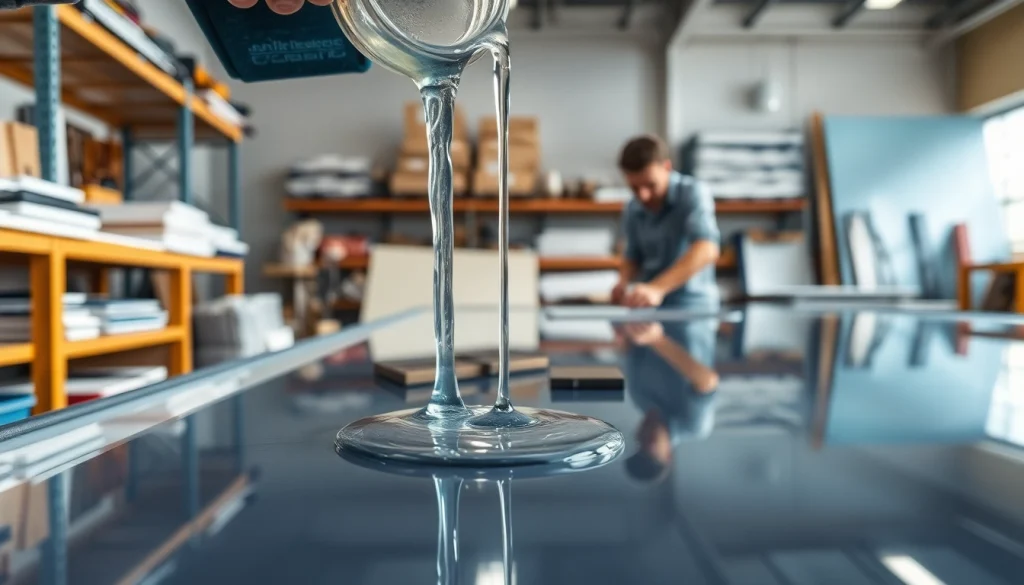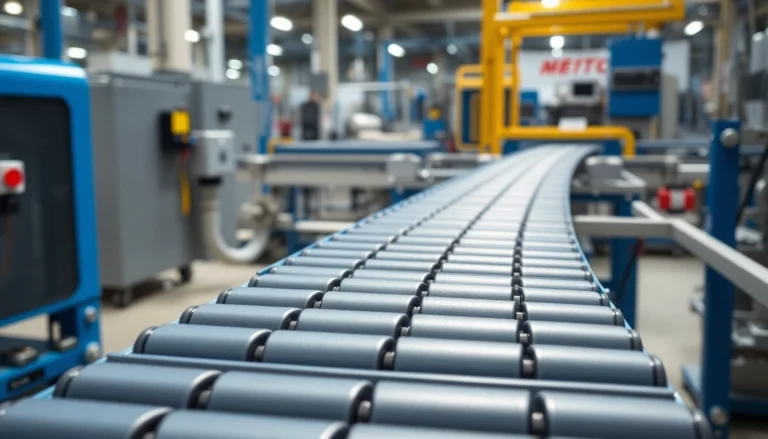
Introduction to Laminating Resin
Laminating resin is a versatile composite material widely used in various industries, particularly in the construction and marine sectors. It serves a critical function in the fabrication of durable and lightweight structures. Understanding the properties and applications of laminating resin is essential for maximizing its potential, ensuring safety, and achieving desired results in manufacturing processes.
What is Laminating Resin?
Laminating resin refers to a category of synthetic resins that are specifically formulated to bond with various substrates, particularly fiberglass. Commonly used for creating composites, this type of resin typically cures into a strong, rigid structure that can withstand impacts and environmental stressors. In essence, laminating resins are unfilled polymers that necessitate the inclusion of a reinforcing medium, such as fiberglass cloth or fibers, to enhance their mechanical properties.
These resins can be further divided into polyester and epoxy types, each possessing unique characteristics that make them suitable for different applications. The choice between these types often depends on the specific requirements of the project, such as strength, curing time, and environmental resistance.
Common Uses of Laminating Resin
The applications of laminating resin are diverse, reflecting its adaptability to various industrial processes. Some prominent uses include:
- Boat Building: Laminating resin is extensively utilized in the marine industry to build and repair boats, providing structural integrity and waterproofing.
- Automotive Components: This resin is often employed in manufacturing lightweight automotive components, contributing to improved fuel efficiency.
- Construction: In construction, laminating resin is used in producing composite panels and beams that offer high strength-to-weight ratios.
- Aerospace: Laminating resin helps fabricate parts for aircraft, providing the necessary strength while keeping weight to a minimum.
- Sporting Goods: It is also found in the production of surfboards, skis, and other sporting equipment, enhancing durability and performance.
The Importance of Quality in Laminating Resin
Quality is paramount when selecting laminating resin, as it directly impacts the performance and longevity of the finished product. High-quality laminating resins ensure better bonding with the reinforcing materials, resulting in enhanced strength and durability. Additionally, they often feature properties like resistance to moisture, chemicals, and UV degradation, which are critical for applications exposed to harsh environmental conditions.
Investing in quality laminating resin not only improves the structural integrity of the final product but also reduces the likelihood of costly repairs and replacements in the future, making it a wise choice for manufacturers and builders alike.
Types of Laminating Resin
Polyester Laminating Resin Overview
Polyester laminating resin is perhaps the most commonly used type of laminating resin. It is known for its affordability, ease of use, and versatility. This resin typically cures at room temperature, making it convenient for various applications.
There are two main types of polyester laminating resin: orthophthalic and isophthalic. Orthophthalic resins are suitable for general-purpose applications and offer decent performance. In contrast, isophthalic resins provide better chemical resistance and are ideal for demanding environments, such as those found in marine applications.
Polyester laminating resin is often recommended for projects that require significant strength without the need for extensive processing techniques.
Epoxy Laminating Resin Characteristics
Epoxy laminating resin is renowned for its superior bonding capabilities and excellent mechanical properties. Compared to polyester, epoxy resins generally exhibit better adhesion, flexibility, and resistance to environmental degradation. They can also withstand greater stress and load conditions.
Like polyester, epoxy laminating resin can be used in various applications, including automotive parts, aerospace components, and high-performance sporting goods. Moreover, it can be formulated to meet specific requirements, making it a flexible option for manufacturers.
Comparing Different Laminating Resin Types
The choice between polyester and epoxy laminating resin largely depends on the requirements of your project. Both types offer unique benefits and drawbacks, which are worth considering:
- Cost: Polyester laminating resin is generally less expensive, making it a popular option for budget-conscious projects. Epoxy resins are typically pricier but provide enhanced performance and longevity.
- Performance: Epoxy resins are stronger and more resilient than polyester resins, especially in abrasive or chemically harsh environments.
- Curing Time: Polyester laminating resins usually cure faster than epoxies, allowing for quicker project completion. However, epoxy resins can often be formulated for varying curing times, accommodating the specific needs of a project.
- Application Suitability: While both resin types can be used in multiple applications, epoxy is preferred for complex projects requiring sharp curves or intricate designs due to its superior flow properties.
Application Techniques for Laminating Resin
Step-by-Step Process for Using Laminating Resin
Successfully applying laminating resin requires a systematic approach. Here’s a general step-by-step process to follow:
- Preparation of Materials: Gather all necessary materials, including laminating resin, hardener (if applicable), fiberglass cloth, mixing tools, protective gear, and a clean working environment.
- Surface Preparation: Ensure that the surfaces to be bonded are clean, dry, and free from contaminants. Sanding the surfaces may enhance adhesion.
- Mixing the Resin: If using a two-part system (common with epoxy), accurately measure and mix the resin and hardener according to the manufacturer’s instructions.
- Applying the Resin: Using a brush, roller, or spray gun, evenly apply the laminating resin to the prepared surface. For larger surfaces, working in sections may yield better results.
- Laying the Fiberglass: Place the fiberglass cloth over the wet resin and gently press it into the resin, ensuring complete saturation. Use a roller to eliminate air bubbles and ensure good contact.
- Additional Coats: Allow the first coat to cure partially (follow the manufacturer’s guidelines) before applying additional coats if needed. This will enhance bonding between layers.
- Curing: Allow the entire assembly to cure thoroughly according to the manufacturer’s specifications before any handling or finishing work.
- Finishing Touches: Once cured, sand the surface as needed for smoothness and apply any additional coatings for protection and aesthetics.
Best Practices for Application
To achieve optimal results, follow these best practices when applying laminating resin:
- Compute Resin Requirements: Accurately estimate the amount of resin needed based on the size of the project to avoid waste.
- Temperature Control: Work in environments with stable temperatures to ensure optimal curing conditions.
- Ventilation: Ensure proper ventilation in the workspace to dissipate fumes and enhance safety.
- Wear Protective Gear: Always wear appropriate protective equipment, including gloves, goggles, and masks, to prevent skin irritation and respiratory issues.
Tools Required for Applying Laminating Resin
Having the right tools is crucial for a successful application of laminating resin. The following tools can facilitate the process:
- Mixing containers for resin and hardener
- Brushes, rollers, or spray guns for application
- Fiberglass cloth or matting
- Sanding equipment for finishing
- Protective gloves, goggles, and masks
- Fresh clean rags for cleanup
Benefits of Using Laminating Resin
Durability and Strength
One of the standout features of laminating resin is its exceptional durability and strength. When cured, it forms a rigid structure capable of withstanding significant mechanical stress. This property makes it ideal for applications in environments that demand robust performance, such as boats and automotive components.
Adhesion Properties of Laminating Resin
Laminating resin exhibits excellent adhesion properties that are critical for bonding with various materials, particularly fiberglass. This strong adhesion not only ensures the structural integrity of the product but also minimizes the likelihood of delamination, which can lead to a failure in performance.
Cost-Effectiveness of Laminating Resin
Laminating resin provides a cost-effective solution for producing robust composite materials. Compared to metals or solid plastics, laminating resin can significantly reduce manufacturing costs while still delivering high strength and durability. The ease of application further enhances its attractiveness for large scale projects.
Challenges and Solutions in Laminating Resin Projects
Common Issues with Laminating Resin
While laminating resin is a fantastic material, several challenges can arise during its application and use. Some common issues include:
- Bubbles and Exothermic Reactions: Improper mixing or application can create bubbles, affecting aesthetics and structural integrity.
- Curing Issues: Variations in environmental temperature and humidity can lead to incomplete curing or improper setting of the resin.
- Yellowing: Over time, exposure to UV light can cause yellowing of the resin surface, impacting the visual appeal of the finished product.
How to Troubleshoot Laminating Resin Problems
To address the challenges associated with laminating resin projects, consider the following troubleshooting strategies:
- To Minimize Bubbles: Ensure thorough mixing and apply the resin in a controlled manner to limit air entrapment. Using vacuum infusion techniques can also help.
- Ensure Proper Curing: Maintain stable environmental conditions, and follow manufacturer instructions for curing times and conditions closely.
- Prevent Yellowing: Choose UV-resistant laminating resin formulations for projects exposed to sunlight, and consider applying UV protective coatings.
Future Trends in Laminating Resin Technology
As industries continue to evolve, so do the technologies surrounding laminating resins. Future trends include:
- Biobased Resins: Increasing demand for sustainable options is leading to the development of biobased laminating resins derived from renewable resources.
- Advanced Properties: Research into enhanced mechanical properties, such as impact resistance and flexibility, is expected to improve performance further.
- Smart Resins: The incorporation of sensors and smart technology may allow for real-time monitoring of performance and condition in applications such as aerospace and automotive.






